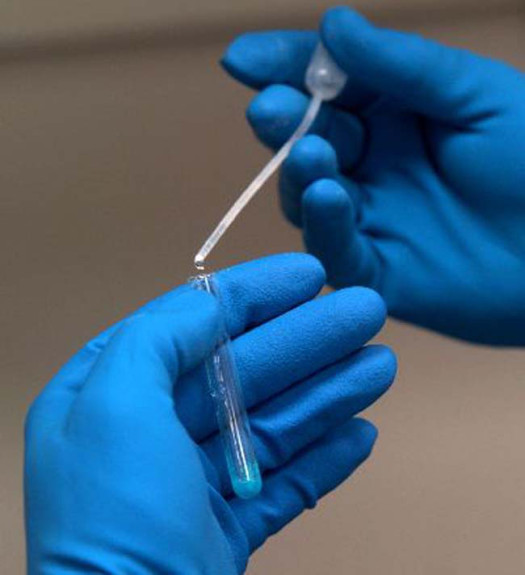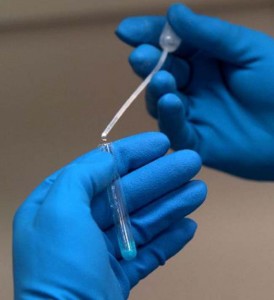People v. Austin
New York Court of Appeals
2017 Slip Op 07300
Decided on October 19, 2017
Issue: Whether a defendant’s Sixth Amendment right to confrontation was violated by the introduction of DNA evidence through the testimony of a witness who had not performed, witnessed or supervised the generation of the DNA profiles.
Holding: The introduction of such hearsay evidence through surrogate testimony to prove an essential fact for a finding of guilt violated the defendant’s right to confront the witness against him.
Facts: The issue here revolves around two burglaries. In the first incident, where the defendant was alleged to have broken into a building, police took swabs of blood found on the building, which were then sent to OCME for a DNA blood analysis. After testing, a DNA profile was produced and the swabs were transferred to an NYPD’s Kingston Avenue facility for storage.
The second burglary took place at a bed and bath store, where a bloody receipt was recovered. The receipt was also tested for DNA evidence by OCME, which produced a DNA profile, and was also transferred to Kingsland for storage.
The numerical identifiers constituting the DNA profile were uploaded by computer to CODIS (the Combined DNA Index System) and OCME was notified that there was a match between the DNA from the crime scene evidence and the defendant’s DNA profile, which was stored in the state database.
At trial, the People opted to have the defendant re-swabbed and retested by the DNA lab to “make things easier for the trial,” and a buccal swab was collected from the defendant. The People’s only forensic witness on the DNA evidence was an OCME Criminalist level III, who testified regarding only the DNA test from the more recent buccal swab taken from the defendant. It became clear that the basis for the criminalist’s testimony was going to be his comparison of the strings of numbers derived from the DNA results generated by other analysts. Defense counsel made several objections, stating that the criminalist’s testimony would violate Melendez-Diaz v Massachusetts, 557 US 305 (2009). Counsel’s attempts to expound upon some of his objections, including his Confrontation Clause argument, were frustrated by the trial court.
Defense counsel’s objections, however, did manage to preclude the laboratory reports including actual numerical identifiers of the DNA profiles generated and physical evidence of the DNA. Nonetheless, the criminalist was permitted to testify in a general and conclusory manner to the DNA evidence without personal knowledge of many matters he asserted to be true. The criminalist testified that the DNA profile generated from defendant’s buccal swab was a match to the DNA profile generated from evidence at the crime scenes even though he did not conduct, witness, or supervise the generation of the DNA profiles.
When the prosecutor asked the criminalist if he had analyzed the DNA profile pertaining to the case, the criminalist stated that he had “reviewed the DNA profile” and later said that he “looked at the DNA profile, the string of numbers, which is the DNA profile and compared it to [the profiles generated from the crime scenes]” and “found that they were the same DNA profile.”
Despite the fact that the laboratory reports were not in evidence, the criminalist was permitted to read from those files on the stand. The witness also admitted that he did not perform testing on the samples from either incident and that he was not present for any of the testing on the samples from the second incident. Despite the court’s permission to allow the criminalist to testify, the court told the attorneys that they had “basically made this criminalist into a parrot” and that “he doesnt know anything” and “didn’t do anything.”
The defendant limited his Confrontation Clause challenge to the OCME witness’s testimony concerning the DNA profile procured while the case was pending and maintained that the postindictment evidence was testimonial, as it was created for the primary purpose of identifying him as the perpetrator and that the testimony was inadmissible hearsay.
Confrontation Clause and the Primary Purpose Test
The Confrontation Clause generally prohibits the admission of testimonial statements made by a non-testifying witness, unless the witness is unavailable and the defendant “had a prior opportunity for cross-examination.” The primary purpose test determines whether evidence is testimonial and considers whether the statement was prepared in a manner resembling ex parte examination and whether the statement accuses defendant of criminal wrongdoing. The Court of Appeals held that the criminalist’s hearsay testimony “easily satisfies the primary purpose test.”
In People v Brown, 13 NY3d 332, 340 (2009), the People similarly relied on testimony of a forensic biologist from OCME who reviewed and relied on a DNA report that was processed by a subcontractor. The defendants in both Brown and this case were linked to DNA from a cold hit. However, unlike Brown, the People here chose not to use the evidence of the pre-accusatory CODIS match because they wanted to avoid bringing a witness to Albany. Instead, the People relied on the evidence from the defendant’s post-accusatory swab that was created to prove his guilt at trial. In other words, the buccal swab was obtained and the resulting profile was compared with the primary purpose of proving a particular fact in a criminal proceeding.
In order to satisfy the Confrontation Clause, the defendant was entitled to cross-examine the analyst who either performed, witnessed or supervised the generation of the critical numerical DNA profile or who used his or her independent analysis on the raw data to arrive at his or her own conclusions. Noting the Court’s recent decision in People v John, 27 NY3d at 313, “it is the generated numerical identifiers and the calling of the alleles at the final stage of the DNA typing that effectively accuses defendant of his role in the crime charged.” The criminalist had no such role here and had no role in the testing of the defendant’s post-accusatory buccal swab. His testimony was no more than a “conduit for the conclusions of others” and “a parroting of hearsay statements, made by other analysis and of which he had no personal knowledge.” The primary purpose of the elicited testimony was to identify the defendant as the burglar.
The Court of Appeals found that the error was not harmless, as evidence of defendant’s guilt in the absence of the DNA evidence was not overwhelming and there was a reasonable probability that the error might have contributed to the verdict.
Dissent
While Justice Garcia concurred with the majority, he did so “on constraint of People v John”?(27 NY3d 294 (2016). Garcia noted that “while the Supreme Court has declined to take this approach,” the Court of Appeals “has made the ‘leap'” to take such an approach regarding DNA evidence under the Confrontation Clause. Garcia’s reluctant concurrence pointed to the US Supreme Court’s decision Williams v Illinois, 567 US 50 (2012). There, the Supreme Court held that where reports relied on by the DNA expert were not admitted into evidence, the experts testimony did not violate the Confrontation Clause. Although Garcia agreed that John mandates reversal despite the similarities between this case and Williams, he was disinclined to agree with the majority’s conclusion that the result may have been different in the case of a “cold hit” where the defendant was linked to DNA from a crime scene before he was ever a suspect.


